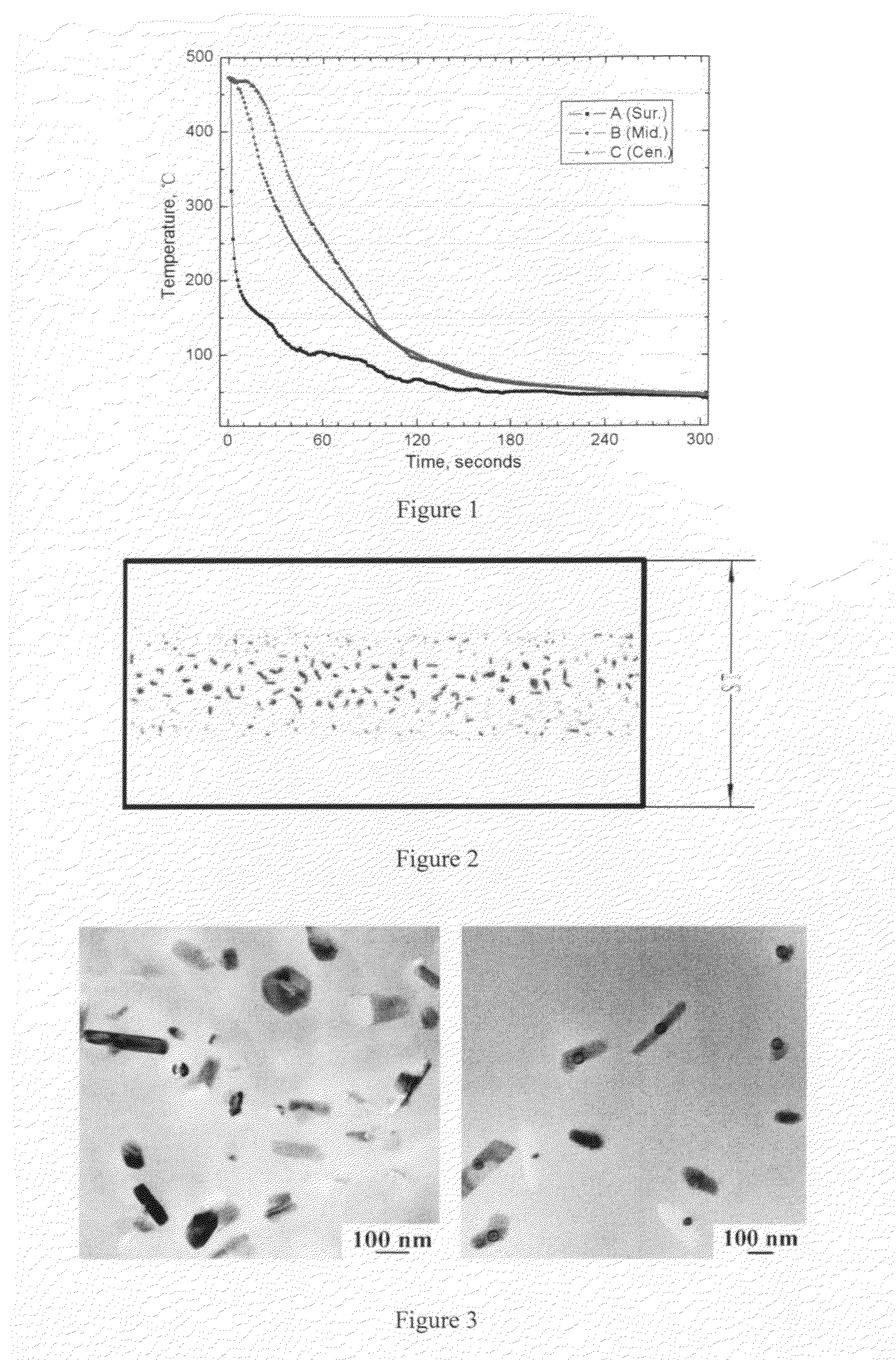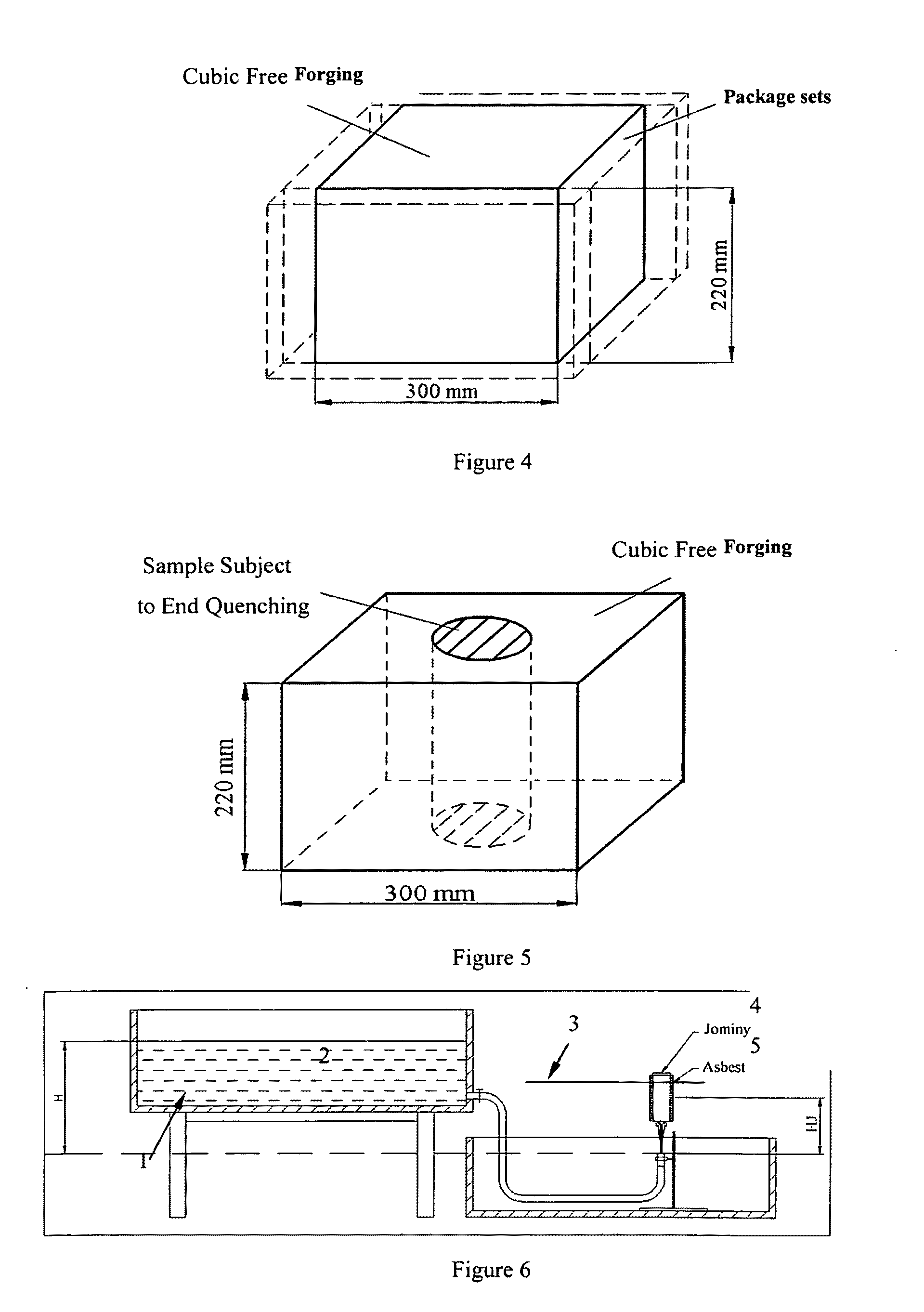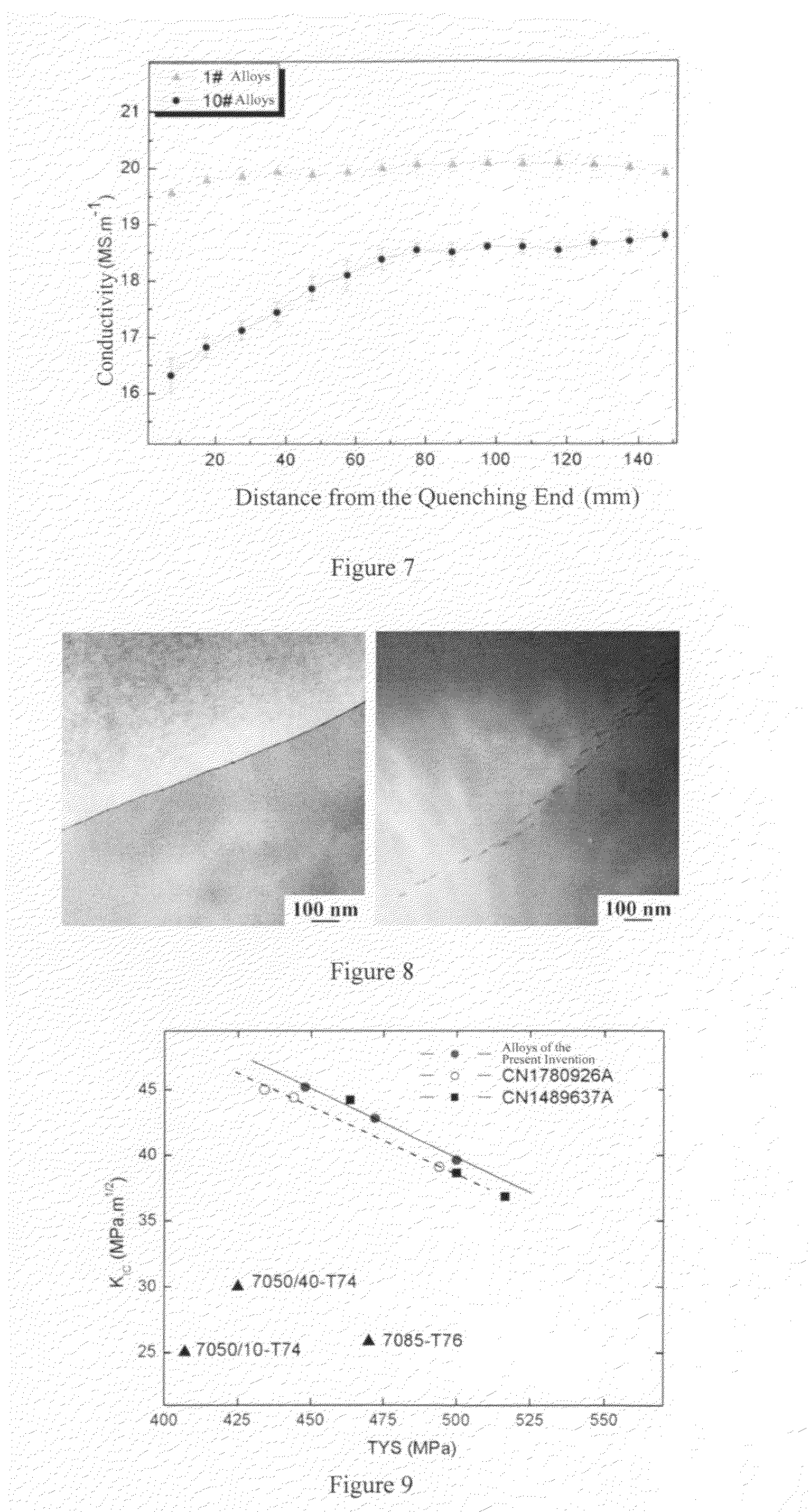Aluminum alloy products for manufacturing structural components and method of producing the same
a technology of aluminum alloy and structural components, applied in the field of aluminum alloys, can solve the problems of deterioration of core properties, high requirements for comprehensive performance of relevant aluminum alloy products, and inability to meet the requirements before identified, and achieve the effect of superior combination of strength and damage tolerance, more homogeneous and consistent performan
- Summary
- Abstract
- Description
- Claims
- Application Information
AI Technical Summary
Benefits of technology
Problems solved by technology
Method used
Image
Examples
example 1
[0100]For proving the concept of the present invention, alloys were prepared in laboratory scale. The composition of the alloys were shown in Table 1. Round ingots having a diameter of 270 mm were prepared by well-known procedures including melting, degasification, removal of inclusion, and DC casting. The resultant ingots were homogenized under the conditions of (465±5° C. / 18 h)+(475±3° C. / 18 h), and then slowly air-cooled. The cooled ingots were peeled and sawed to form casting blanks of Φ250×600 mm. The casting blanks were pre-heated at 420±10° C. for 4 h, and then subject to all-round forge three times in a free forging machine. Finally, cubic free forging products having a dimension of 445 mm (length)×300 mm (width)×220 mm (thickness). For simulating practical industrial conditions of the quench-cooling of large size, large thickness forging products, these cubic free-forging products were packaged, as shown in FIG. 4 such that the heat conduction rate between the alloy product...
example 2
[0103]The cubic free forging products of 1# and 10# alloys prepared in Example 1 were cut, along the height direction, to round bars having a dimension of Φ60×220 mm by means of electric spark processing, as shown in FIG. 5. The round bars were subject to Jominy End Quench Test.
[0104]The end quench test was a conventional method for studying the quench sensitivity of materials. The test equipments were shown in FIG. 6 and described as below. A header tank 1 contained tap water 2 at 20□, and a water pipe 3 was connected to the lower portion of the header tank 1. The outlet of the water pipe 3 aligned with the lower portion of a round bar-like sample 4 for end quench, and the circumferential surface of the round bar is packed with heat-insulating materials 5 to reduce the interference of extraneous factors. One end surface of the round bar-like sample for end quench test sample 4 was subject to free spray quenching for about 10 min, and the parameter of (H—HJ) as shown in FIG. 6 repre...
example 3
[0108]An industrial trial was carried out by means of well known processes including melting, degasification, removal of inclusion, and DC casting, to produce a batch of round cast ingots having a diameter of 630 mm, and the composition of the ingots were shown in Table 3. The cast ingots were homogenized under the conditions of (465±5° C. / 24 h)+(475±3° C. / 24 h), and then slowly air-cooled. The cooled ingots were cut and sawed to form blanks of Φ600×1800 mm.
TABLE 3Compositions of the Alloys Prepared in Industrial TrialAlloys of the presentinventionZnMgCuZrLevel of Primary (Yes / No)(wt %)(wt %)(wt %)(wt %)Impurities(wt %)Yes7.631.791.380.11Fe = 0.06, Si = 0.05, Ti = 0.023
[0109]A blank was pre-heated at 420±10° C., and then subject to all-round forge three times in a free forging machine. Finally, a cubic free-forging product having a dimension of 2310 mm (length)×1000 mm (width)×220 mm (thickness) was prepared. The free-forging product was subject to solution heat treatment, and immer...
PUM
| Property | Measurement | Unit |
|---|---|---|
| length | aaaaa | aaaaa |
| thickness | aaaaa | aaaaa |
| thickness | aaaaa | aaaaa |
Abstract
Description
Claims
Application Information
 Login to View More
Login to View More - R&D
- Intellectual Property
- Life Sciences
- Materials
- Tech Scout
- Unparalleled Data Quality
- Higher Quality Content
- 60% Fewer Hallucinations
Browse by: Latest US Patents, China's latest patents, Technical Efficacy Thesaurus, Application Domain, Technology Topic, Popular Technical Reports.
© 2025 PatSnap. All rights reserved.Legal|Privacy policy|Modern Slavery Act Transparency Statement|Sitemap|About US| Contact US: help@patsnap.com



